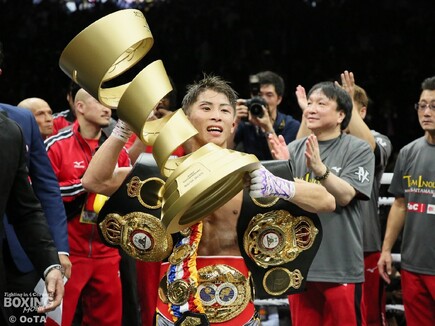 By Daniel Sharman (dansharman17@gmail.com) News came through earlier today that the WBC have officially rescinded Luis Nery's status as mandatory challenger to bantamweight champion Nordine Oubaali. Until recently, a decision made at the WBC's 2019 annual convention had put Nery in line to get a shot at whoever was holding the green belt following a consolidation bout between Oubaali and interim titlist Takuma Inoue. Although assured a position as mandatory, Nery put himself forward to fight a final eliminator against recently dethroned, former IBF bantamweight champion, Emmanuel Rodriguez. An issue arose when Nery scaled 1lb over the 118lb bantamweight limit, missing weight for at least the fourth time in his career (the most infamous occasion being when Nery weighed in at an egregious 123lb during his 2018 rematch with Shinsuke Yamanaka). However, rather than attempt to lose the weight (presumably because Nery felt he could go no lighter), Nery and his team made the questionable move of offering $25,000 worth of compensation to Rodriguez for the bout to go ahead. In an act of great integrity, Rodriguez refused the offer, and the bout was cancelled, with neither fighter receiving any payment whatsoever. This courageous act of Rodriguez's seems to have been the straw which has broken the proverbial camel's back, and has set in motion a chain of events which might finally see Nery properly reprimanded for his continued misdemeanours and lack of professionalism. It seems that this latest incident has lead the WBC to finally withdraw its sustained support for Nery as a bantamweight: not only has the WBC rescinded Nery's mandatory status, the WBC's president Mauricio Sulaiman has gone a far to declare that “[Nery] can no longer campaign at bantamweight”, and that “it is [the WBC's] recommendation that he fights at (122 pounds) or even featherweight.” Whilst this turn of events is somewhat surprising given the fact that the WBC have seemingly carried water for Nery over the past couple of years, it seems that Nery's continued errors are becoming a source of embarrassment even for them. Nevertheless, it is a very welcome outcome, and the just one given the circumstances. More importantly, this occurrence could have a number of interesting ramifications for the bantamweight division. Whilst his being stripped of his mandatory position does not necessarily mean Nery will move up in weight, it is likely given that the only other sanctioning body he holds a ranking within is the WBA (no. 5), and it wouldn't be surprising if the WBC installed him high up in their rankings at super bantamweight, especially given that Rigondeaux, who most recently won a WBC final eliminator at super bantamweight, is moving down to fight for the vacant WBA regular bantamweight title this December. In this connection, it should be seriously noted that Rigondeaux, like Nery, is a PBC fighter, and it would be entirely unsurprising if Nery in his next fight challenged Rigondeaux for that title. The WBA has shown a complete willingness to facilitate PBC's isolationism through the use of its 'regular' titles, allowing exclusively in-house fights to have the veneer of being 'world championship' bouts. However, putting these issues to one side, and assuming that Nery will be exiting the bantam division due to an inability to make weight, let us assess the situation how his absence may affect the issue of the vacant bantamweight lineal or 'world' championship, that is, the fighter who can truly claim to be the best in a given weight class. In the last year of so, the general consensus has formed that Naoya Inoue and Luis Nery respectively represent no. 1 and no. 2 in the bantamweight division. For instance (current as of 28/11/2019): The Ring has Inoue as their champion, and Nery as their no. 1 contender; Boxing Monthly has Inoue at 1, Nery at 2; TBRB has Inoue at 1, Nery at 2; ESPN has Inoue at 1, Nery at 2; Boxrec has Inoue at 1 (650 pts), Nery at 2 (443.6 pts). This has lead to the formation of a further consensus that in order for a new lineal to be crowned, Inoue and Nery must face off against one another. 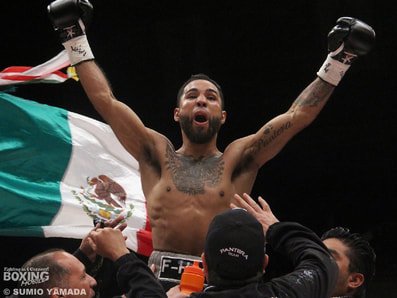 This is problematic for at least two reasons. First, Nery fights under the banner of American promotional outfit PBC, whereas Inoue has recently signed a co-promotional deal with Bob Arum's Top Rank. As mentioned above, the PBC has voiced an express desire to be an isolated 'island' putting on only in-house fights, it was a serious question as to whether a fight between Inoue and Nery could ever be made, even if both fighters hypothetically wanted it (see, for comparison, the situation between Top Rank's Crawford and PBC's Errol Spence). Second, as a consequence of his various misdemeanours in his fights against Yamanaka, Nery is serving a lifetime ban from the Japanese Boxing Commission. This would have prevented Nery fighting Inoue in Japan, and, more importantly, may have damaged Inoue's reputation if he was seen to be facilitating a fighter who had been legitimately banned by the commission of his own country. However, given this recent news, we can now speculate as to how a fight for the lineal title may come about in Nery's absence. It is undeniable, and agreed by all, that Inoue holds the spot of number one bantamweight; the real question is who is deserving of the number two spot in the absence of Nery, and who would have to face Inoue in order to crown a new lineal champion. There are two obvious candidates: WBC champion Nordine Oubaali, and WBO champion Zolani Tete. Both champions are undoubtedly within the top five at bantamweight, and it is likely that a consensus will form around one of them as being deserving of the number two spot. As it currently stands (again, as of 28/11/2019): The Ring ranks Tete as its no. 2 contender, with Oubaali at no. 4; Boxing Monthly has Oubaali at 4, and Tete at 7; TBRB has Oubaali at 3, and Tete at 4; ESPN has Oubaali at 3, and Tete at 4; Boxrec has Oubaali at 3 (372.4 pts) and Tete listed as inactive (343.3 pts prior to his injury). Whilst these rankings are obviously not the same as a general consensus, they are all more or less respected within the boxing community (except perhaps Boxrec), and they all seem to be converging on roughly the same rank ordering. Indeed, further light will be shed on the situation after this Saturday's bout between Tete and interim WBO titlist John Riel Casimero: how Tete looks in that performance should go a long way to helping determine whether he deserves to be placed ahead of Oubaali or not. What's more, a very interesting scenario can be envisaged. If Tete is successful this Saturday, both he and Oubaali will have satisfied their outstanding mandatory obligations. In theory, this leaves them both open to fight a WBO-WBC unification bout between each other in the first quarter of 2020, which would allow Inoue time to perhaps fight his own IBF mandatory (Michael Dasmarinas) as a coming out fight as part of his new Top Rank deal. This would hopefully achieve two things: it would help determine who was the superior fighter was between Tete and Oubaali, and it would set up a huge showdown with Inoue at a later date for the undisputed, lineal bantamweight championship. We can only dream! (Image courtesy of boxmob.jp)
0 Comments
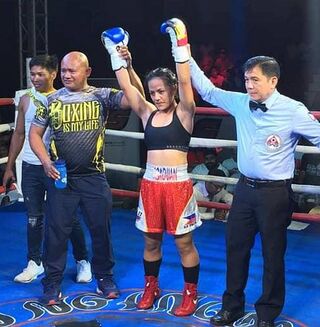 By Rene Bonsubre,Jr It will not be an easy mission for Filipina Jessebelle Pagaduan (12-1-1,5KO's) when she challenges WBO Female light flyweight world champion Tenkai Tsunami (26-12-1,15KO's) of Japan next month at the Uchinoura Ginga Arena, Kimotsuki-cho in Kagoshima, Japan. Asianboxing first reported this story last November 20 with the date of the fight on December 16. Last check on boxrec, Tsunami is on a card set on December 14, so there may be changes on the date later on. Pagaduan is trained by Jhun Agrabio, who has former world champions Marvin Sonsona and John Riel Casimero on his resume. Agrabio knows his boxer is in for a tough task, “I am familiar with the Japanese’s style.” He told this writer in a short chat, “She has speed and power. But we will prepare and train hard for this title fight.” It was in 2014 when Pagaduan had her first world title attempt and lost to Japanese Nao Ikeyama by unanimous decision in Osaka for the WBO Atomweight (102lbs) world title. Ikeyama is known for being the WBO Atomweight champ for four years with six successful defenses before she lost by split decision to fellow Japanese Mika Iwakawa. Pagaduan’s second world title attempt in 2015 was also against another Japanese. It ended in a technical draw against WBO world female miniflyweight champ Kumiko Seeser Ikehara. Pagaduan is a 35 years old southpaw from Benguet. Since her last attempt at world crown she scored five wins, including two against Christine Latube and a unanimous verdict against Thai Sarayanphong Theinthong in Bangkok. Tsunami is also 35 years old and has seen her share of ups and downs. In 2009 She won the WBA world junior bantamweight title by split decision against Xiyan Zhang of China. After four defenses she lost to fellow Japanese Naoko Yamaguchi by unanimous decision. She had failed attempts to win the WBC and IBF world titles and then moved down in weight in 2018 and won the vacant WBO world junior flyweight title by RTD round 8 against another Japanese Chaoz Minowa. Tsunami defended twice against Filipina Gretchen Abaniel (TKO4) and Japanese Naoko Fujioka in a split draw last July. When it comes to world title experience, Pagaduan will be the underdog. But Agrabio will be her asset in the corner. Agrabio guided Marvin Sonsona to the WBO world junior bantamweight title in 2009. Sonsona became the second youngest Filipino world champion when he beat Puerto Rican Jose Lopez by unanimous verdict in Canada. But his career was marred by reported lack of discipline and he lost his belt at the scales in his first defense. Despite the efforts of many to motivate him, Sonsona never won a world title again. Agrabio was the trainer of John Riel Casimero in 2016 when he captured the IBF flyweight title with his revenge fourth round knockout win over Thailand’s Amnat Ruenroeng in Beijing. The first bout of Ruenroeng and Casimero was a controversial foul-fest which ended in a unanimous win for the Thai in Bangkok. Casimero and Agrabio have since parted ways with Casimero now looking for a third world title against Zolani Tete while Agrabio looks for a third world champion. File photo – Jessebelle Pagaduan with Trainer Jhun Agrabio on the left 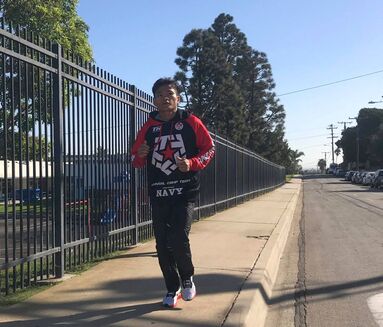 By Rene Bonsubre,Jr IBF world junior bantamweight champion Jerwin Ancajas (31-1-2,21KO’s) of the Philippines is three weeks away from facing Miguel Gonzalez (31-2,8KO’s) of Chile at the Auditorio GNP Seguros in Puebla, Mexico. The 27 year old Filipino southpaw was supposed to defend his title against Jonathan Javier Rodriguez in California on November 2 but the fight was cancelled with visa issues for the Mexican cited as the main cause. Ancajas vs. Gonzalez will be the main undercard of the Emmanuel Navarrete-Francisco Horta WBO junior featherweight title bout set on December 7. Ancajas has reigned as world champion since September of 2016 when he beat Puerto Rican McJoe Arroyo by unanimous decision in Taguig City, Metro Manila. He has seven successful defenses under his belt, the last one was a one-sided thrashing of Japanese Ryuichi Funai in Stockton, California last May. Chief trainer and manager Joven Jimenez told this writer in a short chat that Ancajas’ conditioning has not been affected by the change in fight date. “His conditioning is even better now,” Jimenez stated. Ancajas chose to stay in the U.S. after the date of his defense was changed instead of returning to the Philippines. “Jerwin remains focused. I don’t really know the reason why his opponent was changed, but I have seen Gonzalez’s fighting style, it is similar to Rodriguez so it won’t be a problem.” Jimenez added. Gonzalez is a 30 year old right handed fighter who has an almost four year reign as the WBA Fedelatin titleholder. The October rankings of the International Boxing Federation (IBF) has Gonzalez ranked at number 14. His ring moniker ‘Aguja’ means needle. Familiar names on Gonzalez’s resume include Argentine Luis Alberto Lazarte, who he beat by unanimous decision for the WBA regional belt in 2015. Lazarte is known to Filipino fight fans for the infamous fight against John Riel Casimero in 2012. That fight for the vacant IBF light flyweight belt ended in a tenth round TKO win for the Filipino but the Argentine fans in Mar de Plata started an ugly ring riot and assaulted Casimero and his trainer and promoter. Gonzalez has lost to Australian Andrew Moloney, who now has the WBA interim super flyweight title and to Paul Butler of the U.K., who twice came up short in two bids for an IBF world crown. Ancajas has been calling out the other superflyweight world champions especially Mexican Juan Francisco Estrada, who has the WBC belt and is widely considered to be the division’s top dog. This will be the first time that Ancajas will fight in Estrada’s home country. The other recognized champions are Khalid Yafai of the U.K.,who holds the WBA title and Japanese Kazuto Ioka has the WBO crown. Photo of Jerwin Ancajas jogging in the U.S. c/o Joven Jimenez 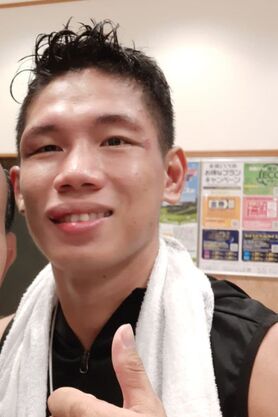 By Rene Bonsubre,Jr WBO Asia Pacific junior lightweight champ Joe Noynay (18-2-1,7KO’s) of the Philippines will defend his title in Tokyo against Japanese Kenichi Ogawa (24-1,18KO’s) on December 7. This will be Noynay’s third straight trip to Japan this year. Last April he stopped Japanese Kosuke Saka in two rounds for the vacant WBO regional belt at the Edion Arena in Osaka. Then in July, he defended his crown by stopping London Olympics bronze medalist Satoshi Shimizu in six rounds also in Osaka. Both were surprisingly dominating performances which ensured another trip to the Land of the Rising Sun. This time, he will be up against the 31 year old Ogawa, who has seen his share of controversy. Ogawa fought American Tevin Farmer for the vacant IBF junior lightweight world title in 2017. The judges handed a spilt decision verdict in favor of the Japanese but a drug test done a few days before the fight revealed that Ogawa was positive for two forms of synthetic testosterone. Ogawa’s drug test done after the fight was negative. Reports stated that sources close to the fighter said that medicine for Ogawa’s skin condition may have triggered the positive result. But he ended up being fined and the Nevada State Athletic Commission invalidated the fight. The International Boxing Federation (IBF) stripped him of the world title. He was also suspended by the Japanese Boxing Commission for a year. He is the first Japanese boxer suspended for failing a drug test. Ogawa was inactive for the whole of 2018 before returning and beating Filipinos Glen Medura and Roldan Aldea. The 24 year old Noynay, a southpaw from Bogo,Cebu, was one of the many Filipino fans who watched online and witnessed Nonito Donaire get beaten by Naoya Inoue in the WBSS bantamweight finals in Saitama. “I have already started training here in Manila,”Noynay told this writer. He is aware of Ogawa’s past controversy. But he is also aware that he will be fighting an opponent who already saw action at the world championship level. But Donaire’s loss is not his only motivation for winning his fight at the Korakuen Hall. “I am very familiar with my opponent’s style because he has already beaten Raymond Sermona, Roldan Aldea and Glen Medura. We all train in the same gym.” Noynay stated, “I will try my best my best to avenge them.” The three Filipinos Noynay mentioned, all lost to Ogawa at Tokyo’s Korakuen Hall. Noynay previously held the Youth version of the WBO Asia Pacific title. Two years ago, Noynay took the said belt from previously unbeaten Chinese Pan Jinxiang by eighth round technical decision in Zhongshan,China. Last year, he returned to his hometown of Bogo and defended his WBO regional belt against Mexican Hector Garcia by majority decision. A few months later, he had another successful defense in Metro Manila by stopping China’s Zhang Qixiu in eight rounds. Noynay is ranked number seven by the WBO while Ogawa is at number eleven. Noynay doesn’t like talking about a world title fight just yet. But he is aware that a win will move him closer to a shot against the current WBO junior lightweight world champion, Jamel Herring of the U.S. File photo – Joe Noynay after winning his fight against Satoshi Shimizu 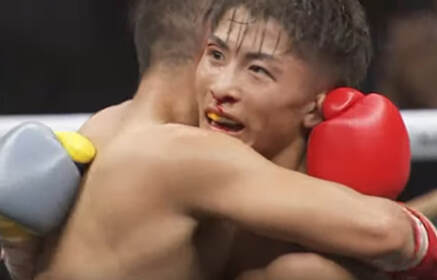 By Rene Bonsubre,Jr There are always questions hovering over any young fighter who has a great punch and breezes through with an unbeaten record. How good were the guys that he beat? What happens when he gets hit by a big punch? How will he react to getting knocked down or being cut? How will he handle himself when he faces a tricky veteran? Naoya Inoue answered these questions in the World Boxing Super Series (WBSS) Bantamweight finals Thursday night. This is not to say Inoue doesn’t have a great body of work already. He turned pro in 2012 and captured his first world title two years later by stopping Mexican Adrian Hernandez in six rounds for the WBC light flyweight crown. He would bypass the flyweight division and stop the tough Argentine Omar Narvaez in two rounds for the WBO junior bantamweight title. After seven defenses, the Yokohama Monster would terrorize the bantamweight ranks, winning the secondary WBA crown and the IBF world title and easily toppling British Jamie McDonnell, Dominican Juan Carlos Payano and Puerto Rican Emmanuel Rodriguez enroute to the WBSS finals. But the Filipino Flash is in an entirely different class; a veteran boxer who distinguished himself in five weight categories and has a Hall of Fame resume. After experiencing a downslide in his career a few years ago, he once again drew attention in the WBSS by reaching the finals. Roughly 90 percent of those surveyed picked Inoue, many by knockout. But deep down, people knew Donaire was still dangerous. He could still have one good fight left in him. And he did. But Donaire’s gallant effort was not enough. He drew blood by cutting Inoue with a punch to the right eye as early as the second. He showed Godzilla was human. Donaire had his moments when he rocked Inoue with his right hand and scored well to the body. But Inoue, roughly ten years younger, was expected to recuperate faster in the grueling fight. Welts started to show on Donaire’s face as blood continued to seep from Inoue’s nose and the cut eyelid. But Inoue threw the harder shots. He slowly but surely built his lead. Donaire had opportunities to drop Inoue but the Japanese hung on and fired back. In the decisive eleventh round, a hard left to the liver had the Filipino turning and grimacing in pain before he went down on his knee. He bravely got up when most boxers couldn’t or wouldn’t. Donaire continued to take shots in the last round in his effort for one last miracle punch. But it wasn’t meant to be. All three judges scored it for Inoue - 116-111, 117-109 and 114-113. The pro-Inoue crowd of more than 20,000 at the Saitama Super Arena in Saitama, Japan celebrated. Inoue (19-0,16KO’s) unified the IBF and WBA world titles and won the Muhammad Ali Trophy. His gutsy display through blood will certainly earn him more accolades. A great opponent in the future would be the WBC bantamweight champ Nordine Oubaali (17-0,12KO’s) of France, who beat Naoya’s younger brother, Takuma Inoue by unanimous decision in the main supporting bout. If Donaire (40-6,26KO’s)- who will turn 37 on November 16 – decides to leave boxing for good, he can hold his head high and look back at an incredible career. Together with Manny Pacquiao, they gave us the Golden Age of Philippine Boxing. Photo – Naoya Inoue and Nonito Donaire embrace after the final bell. 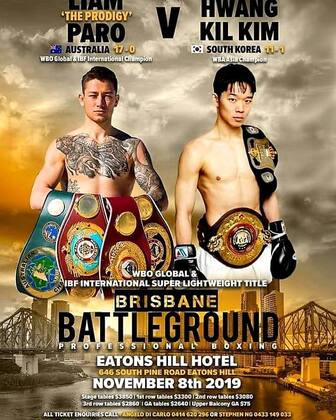 By The Fight Pod On November 8th, current WBA Asia Lightweight Champion, Hwang Kil Kim (11-1) will face his toughest opponent yet - Australia’s “prodigy” Liam Paro (17-0), currently ranked #2 and #3 by the WBO and IBF in the Super Lightweight division with multiple titles and a decorated amateur record. Originally, Paro was booked to fight a Romanian opponent (17-0), but had to pull out due to an injury. Kim’s team, Hannam Gym, jumped at this rare opportunity and Kim became a late replacement. The two fighters are headlining the card as the main event of a card taking place in Paro’s hometown of Brisbane, Australia. As if fighting on enemy territory for the first time and accepting the biggest fight of his career on short notice doesn’t already reflect Kim’s determination and confidence, Kim is stepping up a weight class to fight Paro at Super Lightweight. “I started my career at super welterweight, so stepping up to super lightweight isn’t a problem,” Kim told The Fight Pod. “I can’t say the limited time to prepare as a late replacement wasn’t a concern. I only had one month to prepare, but I gave it my all during that month so I have no regrets.” Considering the circumstances, one might write Kim off as “easy work”. Paro’s promoter doesn’t seem too concerned and is already thinking about Paro’s next fight for a world title. Looking at BoxRec, not only is Paro Kim’s toughest fight yet, Kim is the biggest threat Paro has yet to face as well. Of Paro’s 17 victories, although undeniably impressive, not one of those wins were against a fighter of Kim’s caliber. When asked about where Kim believes he has the upper hand, he pondered and listed a few attributes light heartedly. “The upper hand huh...well, there doesn’t seem to be much haha. Pressure? Endurance? Heart? Well I should be ready for his counters…”, then confidently stated, “Output. I’ll double or triple the volume of punches he throws.” For context, Hannam Gym is renowned for their endurance, aggressive pressure, and ability to keep the high rate of output without fading in the later rounds. Anyone familiar with the gym will know that those aren’t just meaningless words. “It’s all speculation until Paro and I step into the ring”, says Kim as he dismisses any potential excuse for himself. “I train as hard as anyone if not more than anyone. I have belief in myself. Thank you to those who support me. Win, lose, draw - all I can do is give it my all and have no regrets”. A victory for Kim will not only put Korea back on the map for world championship title contention, it may heavily influence the method in which the different sanctioning bodies attempt to build a world champion . As many Asian boxing fans know, South Korea was the powerhouse of Asia with several World Champions. Today, six separate sanctioning bodies exist and can never come to an agreement about unification. The champions of their respective organizations are not allowed to fight each other. Violation of this “rule” will get the fighter banned for life. The presidents In the end, the fighters get the worst part of the deal - choosing to fight in one will increase the chances to fight for a certain title, OPBF for example, as opposed to another org., that will allow their fighters to fight for the WBA Asia title. The head coach of Hannam Gym, also the president of Hannam Promotions has been jumping from organization to organization due to disagreements I assume, but regardless of which sanctioning body, he is always for the best interest of his fighters and some how, some way, finds a way to provide his fighters an opportunity to get one step closer to the World Title. (Will be explained in a future article.) 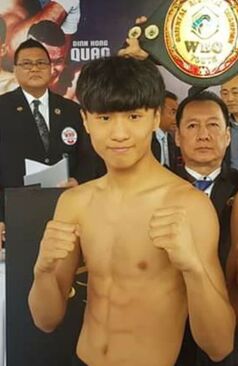 By Rene Bonsubre,Jr Jong Seon Kang of South Korea survived an early knockdown to beat Filipino Tomjune Mangubat for the vacant WBO Oriental Youth Featherweight title in Ho Chi Minh City, Vietnam. After a tentative start by both boxers, the 18 year old Korean was dropped by a counter hook in the second. The Filipino moved in for the kill but Kang weathered the storm and started to pressure Mangubat in the subsequent rounds. Kang began to dictate the tempo, forcing Mangubat on the back foot. Mangubat tried to put some sanity into the situation with his long jab and one-two combos. But Kang had no trouble cutting off the ring and would rough up Mangubat every chance he got. The crowd enjoyed the heavy exchanges. Mangubat wilted in the endgame; Kang’s pressure and volume punching sapped the Cebu-based boxer and the Korean did enough to earn the nod of two of the three judges, all from Thailand. Mekin Sumon and Sawaeng Thaweekoon had it for Kang 96-93, Surat Soikrachang had it 95-94 for Mangubat. This was the 22 year old Mangubat’s second career loss. He is now 11-2-1,9KO’s. He was considered a good prospect here in Cebu,Philippines simply because of his height, build and natural power. But last May, Mangubat suffered his first career loss against fellow Fiipino Arnel Baconaje in Mandaue City,Cebu for the WBC ABCO Silver featherweight belt by TKO in the eighth round. He bounced back last July with a unanimous decision victory over Joffrey Garcia in Liloan,Cebu. Kang was Mangubat’s first foreign opponent and this was also his first outing overseas. Kang is now 10-0-2,6KO’s. He was 1W- 2D in his last three bouts but the win was for the vacant WBC Youth Intercontinental super featherweight title, which he earned by beating Chinese Qixiu Zhang by fifth round TKO in Xian,China. This weekend was marked by a string of losses for Filipino boxers abroad. The most prominent happened in Las Vegas on the undercard of Canelo Alvarez vs Sergey Kovalev. In a battle of high profile hard-hitting prospects – Filipino Romero Duno was decked in 1:38 seconds of the opening round by Ryan Garcia of the U.S. for the WBO NABO and WBC Silver lightweight belts. This was the second loss for Duno (21-2,16KO’s) while Garcia remained unbeaten at 19-0,16KO’s. In another blitz attack, Xavier Martinez of the U.S. knocked out Filipino Jessie Cris Rosales in only 21 seconds in a Las Vegas card held Friday.Filipinos Recky Dulay and Elias Joaquino also suffered losses in that same card. Filipino Esneth Domingo did snatch a win on the Kang-Mangubat undercard but Ponciano Remandiman lost. In Japan yesterday, Filipinos KJ Natuplag and Eranio Semellano lost to heir Japanese opponents. Photo - Jong Seon Kang of South Korea during the weigh-in |
Guests!These articles are submitted by guest writers and sites. They aren't submitted by the usual folk behind Asian Boxing and don't fall in line with our editorial stance, giving a fresh view on various boxing issues from the Asian boxing scene. Archives
August 2021
Categories
All
|
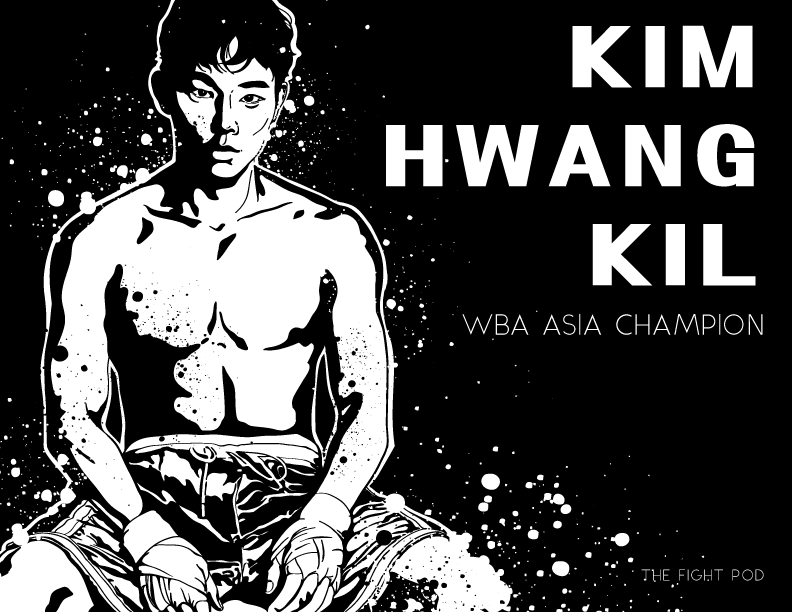
 RSS Feed
RSS Feed
